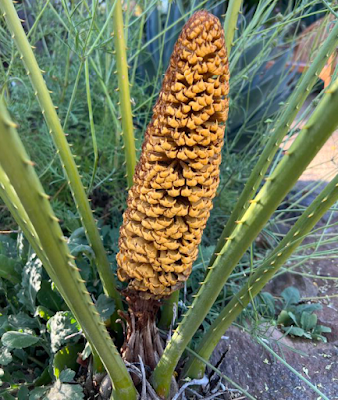 |
| Cycas debaoensis – Debao Cycad Ornamental Plant |
Cycas debaoensis holds significant ornamental value due to its rare and visually striking characteristics, making it one of the most attractive species in the cycad family. Its most notable feature is its multi-pinnate foliage, which gives the leaves a delicate, finely divided, and almost fern-like appearance—unusual among cycads, which typically have simple pinnate leaves. Each leaf can grow up to 2.5 to 3 meters long, forming an elegant crown that sways gracefully in the wind, enhancing its aesthetic charm. The bright to dark green color of the leaflets adds a lush, tropical feel to gardens and landscapes.
The trunk, which is usually slender and upright, supports the large crown and adds a vertical, sculptural element that fits beautifully into modern landscape design. Because of its slow growth rate, Cycas debaoensis is well-suited for use in pots, containers, rock gardens, or as a focal point in landscape architecture. Its exotic reproductive structures—large, slender male cones and deeply divided female megasporophylls—add seasonal interest and botanical uniqueness.
This species is particularly appreciated in botanical gardens, collector displays, and high-end residential or resort landscaping. It can be used in tropical-themed settings, shade gardens, or paired with flowering plants for contrast. Despite its tropical origins, it has a degree of adaptability and can tolerate light frosts, making it more versatile than some other tropical plants. Due to its rarity in cultivation and unique appearance, Cycas debaoensis also holds collector and conservation value, making it a prized specimen in both private and institutional collections.
|






















No comments:
Post a Comment